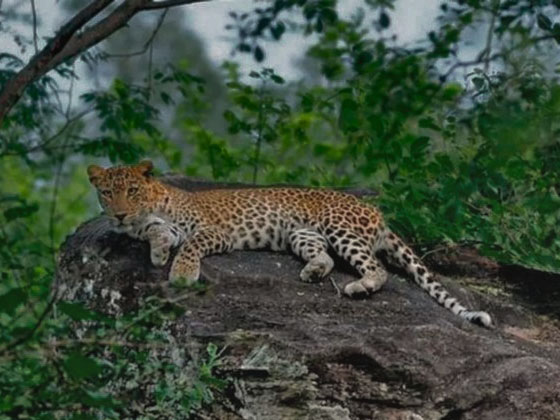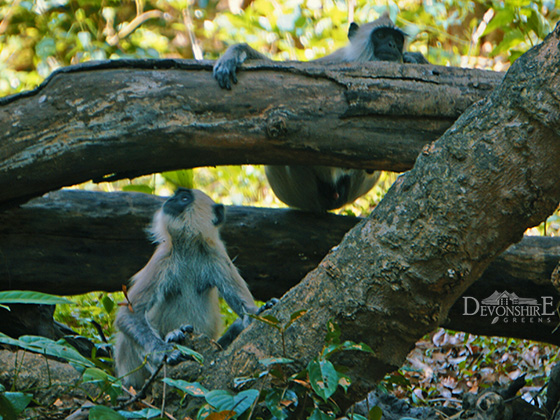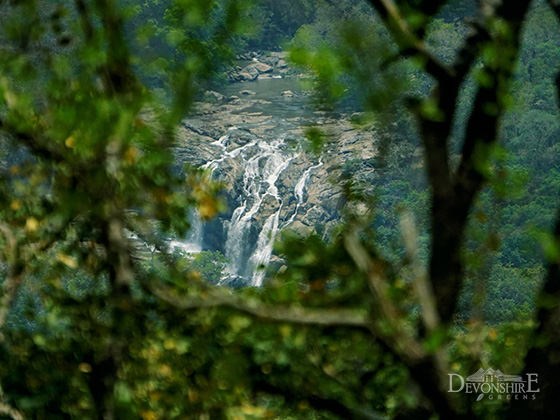
Trek to Chinnar wildlife sanctuary
Chinnar wildlife sanctuary is situated on the eastern slopes of the western ghats which is approx 60km from Munnar town. Chinnar lies in the rain shadow regions of the western ghats therefore it receives much lesser rainfall compared to Munnar and generally looks much drier than Munnar.Trek was organised by the resort named Devonshire greens which we chose for our accommodation in Munnar. Devonshire Greens provides various tourism activities in and around Munnar along with the Chinnar trek. This is one of the best experiences one can enjoy when visiting Munnar at any time of the year.
We checked in at the resort a day before our trek to Chinnar wildlife sanctuary on the 8th of April. We spent the rest of the day visiting the town and tourist places near Munnar town. Devonshire Greens is located in Pallivasal which is 8 km away from Munnar near the famous Attukad waterfalls. We left the resort for the trip at 8:00 a.m., following a breakfast served by the resort. We made sure we ate a good diet before going on the jungle trek because I wasn't sure what to expect from Chinnar's forest regions. We arrived in Munnar town at 8:30 a.m. and drove through the beautiful valley roads, passing by the Wood Briar Estate, to Marayur village, which is famous for its jaggery production.
The route itself is a rewarding drive, with several tea estates' plantations, minor waterfalls, and a variety of wild animals. We were on the road during the flowering season of jacaranda trees (Jacaranda Mimosifolia), also known as Neeli Gulmohar or Nupur, which have lovely violet blooms. Traveling along this iconically picturesque path is a mesmerising experience.
We arrived in the Marayoor sandalwood forest after an hour. The Kerala Forest Department holds auctions for the sale of Marayur sandalwood. Without the permission of the forest authority, it is prohibited to grow sandalwood. Perfumes, oils, and furniture are all made from the wood of these semi parasitic trees. The scent of sandalwood will appeal to a wide range of people. We were fortunate enough to see deer along the way. These deer are most commonly spotted in lowland forest where there is plenty of grass and plants to eat. If you see one, keep your voice down because these shy animals will attempt to stay as far away from people as possible.


The resort's guide then halted us in front of a Jaggery processing factory, where we saw the process of manufacturing jaggery from sugarcane. To begin, sugarcane juice is extracted and pumped into a vessel, where it is heated for 3 hours by burning the same sugarcane waste, and small amounts of lime powder are added and mixed into a paste, which is then formed into jaggery balls and dried by hand. Marayur is notable for its sugarcane farming, which led to the production of jaggery in this village.
Marayur is especially noted for its Neolithic archaeological sites known as "the Muniyara Dolmens," which were Neolithic people's burial chambers. Locals, however, think that these chambers were the meditation or burial chambers of Hindu mythology's "Muni" or saints.
We continued our journey for another half hour and entered the Chinnar wildlife sanctuary, which covers an area of 90.44 square kilometres. The state highway 17 between Munnar and Udumalpet is the route we travelled. The trek begins near the Alampetty Checkpost, at the Forest Department offices. We had a good view of the enormous Thoovanam waterfalls from the road on our way to the Alampetty check post and got some good shots with our DSLR camera.
There are several trek trails that lead to various regions of the forest. Various single-day treks begin here for only 250 rupees for Indians and 600 rupees for foreigners. We selected to stay in the Pambar log house. The package cost Rs. 4000/- for two people and Rs. 1000/- for each additional person, with the entrance fee levied separately. The log house has a check-in time of 2 p.m. and a check-out time of 10 a.m.

After lunch at the forest department canteen, we began our hike to the log house including one guide named Kannan and his brother. The guides provided us clear advice on how to conduct ourselves in the woods. If you aren't careful, this mysterious jungle can become dangerous. Always make sure you don't get left behind and pay attention to the guides' hand gestures. Also, never try to speak loudly because it may alert wild animals, causing you to miss your chance to spot one.
From the beginning, the walk follows the "Chinnar" river. The famed Periyar Tiger Reserve Forest in Tamil Nadu is located on the other side of the river. After an hour of walking along the Chinnar River's banks, we arrived to the intersection of the "Chinnar" and "Pambar" rivers, which merge to form the "Kootar" river, which flows to the Amaravathi reservoir in Tamil Nadu, according to the locals.
During our journey, the Hanuman Langurs, also known as Tufted Grey Langurs, are the main hosts and can be found in large numbers. The faces and ears of these Langurs are black, and they are mostly grey. The guides warned us that there are crocodiles in the river, but we were not fortunate enough to see one.
Chinnar is the home of the Grizzled Giant Squirrel, a huge tree squirrel, found in Chinnar Wildlife Sanctuary. The Grizzled Giant Squirrel is exclusively found in the Chinnar Sanctuary's riparian woodland. Two protected tribal communities, the Hill Pulaya and Muthuva communities live as different settlements in various parts of the sanctuary. The profit from the trek goes to the development of these communities.
Chinnar is located in the Western Ghats' rain shadow zone, receiving only little rainfall compared to Munnar. As a result, the vegetation appears to be relatively dry, and diverse plant species that can endure moderate rainfall can be found.
The trek trail deviates from the river meeting place to the Pambar river's banks, where we had to walk on top of rock surfaces along the river for half an hour before reaching the Pambar log cabin on the Pambar river's banks. Once they get at the log house, the guides will begin preparing dinner and will ensure your safety throughout the night. We had a bath in the shallow areas of the river after arriving. There are certain locations where the depth exceeds 8 feet. If you're visiting, always follow the recommendations of your guides. We had a wonderful experience with the guides that accompanied us on our journey.
Our guide brought us black tea in the morning and we took a different route to the checkpoint. There is a watchtower on the return journey from which we had a fantastic view over the Chinnar wildlife sanctuary and Periyar tiger reserve. We returned to the forest office after spending 20 minutes there, completing our one-day journey. From the log house, the morning walk took an hour and a half. We returned to Devonshire Greens resort in the vehicle that the resort had already sent for us after eating breakfast in the forest department canteen.
In comparison to the other main woods in and surrounding Munnar, Chinnar will be a unique experience. The climate and weather are completely different from those found in the adjacent wildlife sanctuaries. It's intriguing to consider how nature can display such a wide range of atmospheres in only a few kilometres.